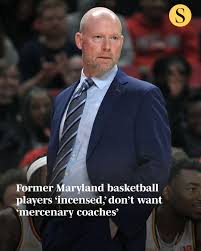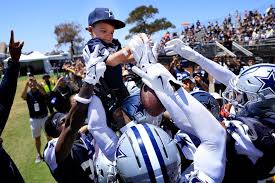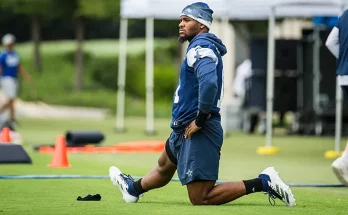“Len Elmore Blasts Maryland’s Leadership, Criticizes Outsiders for Damaging Basketball Program”
Len Elmore, a former University of Maryland basketball star and current analyst, has never been one to shy away from speaking his mind, particularly when it comes to the well-being of the program he helped put on the map. Elmore’s passion for Maryland basketball runs deep, and when he speaks, people listen. His criticism of the current state of the Maryland basketball program, particularly the university’s leadership and the involvement of outsiders in its direction, has sparked a wide range of reactions. For Elmore, the decline of the program is not just a matter of on-court performance but also the erosion of what Maryland basketball once stood for.
In recent years, Maryland’s basketball program has faced challenges on and off the court, including inconsistent performance, leadership changes, and a shifting landscape in college athletics. While fans and media have discussed these issues extensively, Elmore’s comments provide a candid and sharp perspective on the roots of the problems.
The Leadership Crisis at Maryland
Elmore is especially critical of the leadership at the university, citing a disconnect between the administration and the basketball program. He argues that the decision-makers at Maryland, particularly those involved in athletics, are out of touch with the realities of running a successful basketball program. In his view, the university’s leadership has failed to provide the necessary support for the program to thrive.
Elmore points to a lack of continuity and vision in the leadership structure. The athletic department at Maryland has seen numerous changes in leadership over the years, which has contributed to a sense of instability. Elmore believes that such instability has hindered the development of the basketball program, leading to a decline in recruiting, player development, and overall performance.
“The problem is not just about wins and losses,” Elmore says. “It’s about leadership. You need stability, a clear vision, and a commitment to supporting the program at the highest level. Without that, everything else falls apart.”
Elmore’s frustration with the university’s leadership is not just rooted in recent events; it is also informed by his own experiences as a player. When Elmore played at Maryland in the 1970s, the program was under the leadership of head coach Lefty Driesell, who was known for his passion and commitment to building a competitive team. The program was successful, and Elmore and his teammates became part of a winning tradition.
For Elmore, the leadership at Maryland in the 1970s was a far cry from what it is today. He recalls a time when the administration supported the program and allowed it to thrive. “There was a real sense of unity between the administration, the coaches, and the players. We all worked together to build something special.”
However, Elmore contends that over the years, the leadership at Maryland has become more focused on financial considerations and less concerned with the program’s culture and legacy. This shift, according to Elmore, has had a detrimental effect on the team’s performance and morale.
The Impact of Outsiders
Another major point of contention for Elmore is the involvement of outsiders in the decision-making process surrounding Maryland basketball. Elmore is particularly concerned with the increasing influence of boosters, alumni, and outside influencers in shaping the direction of the program. While he acknowledges the importance of financial support and the contributions of alumni, he believes that outsiders have overstepped their bounds and interfered with the team’s ability to function as a cohesive unit.
“The program is being pulled in so many different directions by people who don’t really understand what it takes to build a successful team,” Elmore says. “When you have too many voices, too many opinions, it creates chaos. It undermines the authority of the coach and disrupts the unity that is necessary for success.”
Elmore’s criticism of outsiders is not just about their influence on the coaching staff or the players. He is also concerned with the way the media and public opinion have played a role in shaping the narrative around the program. In his view, the increasing scrutiny from external sources has added unnecessary pressure to an already fragile situation.
“The media and public have a tendency to blow things out of proportion,” Elmore says. “They don’t always understand what’s really going on behind the scenes. They create a narrative that often doesn’t reflect the reality of the situation. This kind of external pressure is damaging to the program.”
While Elmore acknowledges that the media and fans play a crucial role in supporting a program, he believes that too much outside influence can be detrimental. The constant need to appease external interests, in Elmore’s view, detracts from the program’s focus on what truly matters: developing players and winning games.
The Decline of Maryland Basketball
Elmore’s frustration with Maryland’s leadership and the influence of outsiders is rooted in the noticeable decline of the basketball program in recent years. Once a powerhouse in college basketball, Maryland has struggled to return to its former glory. Under head coach Mark Turgeon, the team showed flashes of brilliance but never seemed to reach the level of success that fans and alumni expected. The departure of Turgeon and the subsequent hiring of Kevin Willard raised hopes for a new era of Maryland basketball, but Elmore remains cautious.
“I’m not going to sit here and say that Kevin Willard is the answer to all of Maryland’s problems,” Elmore says. “I think he’s a good coach, but there are deeper issues that need to be addressed.”
For Elmore, the decline of Maryland basketball is not just about the coaching staff or the players—it’s about a systemic breakdown within the program. He points to the lack of a clear and consistent vision, the failure to recruit top-tier talent, and the internal strife that has plagued the team in recent years. The departure of key players and the struggles to maintain consistency on the court have been evident, but according to Elmore, the problems run deeper than wins and losses.
“There are things that need to be fixed behind the scenes,” Elmore says. “The players, the coaches, they can only do so much. But the leadership has to create an environment where success is possible. And right now, that’s not happening.”
Moving Forward: What Needs to Change
Elmore has a clear vision for what needs to happen for Maryland basketball to return to prominence. First and foremost, he believes that the leadership must provide stability and support for the program. This means not only hiring the right coach but also ensuring that the coach has the resources and authority to build a successful team.
“There has to be a commitment to the program,” Elmore says. “That means making the necessary investments in facilities, recruiting, and player development. But it also means giving the coach the freedom to do his job without outside interference.”
Elmore also advocates for a return to the values that made Maryland basketball great in the past. He believes that the program must focus on developing players both on and off the court, creating a culture of discipline, teamwork, and hard work. The program should prioritize building strong relationships between coaches, players, and the administration, with a shared commitment to excellence.
“We need to get back to the basics,” Elmore says. “It’s not just about winning games—it’s about building a program that lasts. That means investing in people, not just in facilities or recruiting.”
Finally, Elmore stresses the importance of maintaining a sense of unity and focus within the program. This means limiting the influence of outsiders and ensuring that the team can function as a cohesive unit, with everyone working toward the same goal. Elmore believes that when the program operates with a clear purpose and a shared vision, success will follow.
“The program has to be about the players, the coaches, and the people who truly care about Maryland basketball,” Elmore says. “When everyone is on the same page, that’s when great things can happen.”
Len Elmore’s criticism of Maryland basketball’s leadership and the influence of outsiders is a call to action for those who care about the program’s future. He recognizes the challenges that come with running a high-profile program in today’s world of college athletics, but he also believes that Maryland basketball has the potential to return to its former glory. The key, according to Elmore, lies in leadership, stability, and a renewed focus on the core values that made Maryland basketball a force to be reckoned with in the past.
As Elmore looks toward the future, he hopes that those in charge of the program will take his words to heart and make the necessary changes to set the program on a path toward success. For Maryland basketball to thrive again, it will require a united effort from all involved—from the coaches and players to the administration and the fans. Only then can Maryland basketball truly return to its rightful place among the elite programs in the country.



